John Wick 4 delivers muscle “car-fu” in a Cuda
When we first met John Wick, way back in 2014, his ride was a ’69 Ford Mustang Boss 429 (really a Mach 1). In the film it’s more than a machine, it’s a memento, a reminder of his late wife Helen. To John, a retired bullet-slinging hitman, it’s a car worth killing for; after Helen’s death, the loss of her final gift to him—a beagle puppy named Daisy—and the theft of his Mustang leads John back into his old life as a mythic assassin capable of dizzying carnage.
In an interview with Hagerty, John Wick 4 director Chad Stahelski expounded on what makes muscle cars so integral to these films:
“There’s something cool and intrinsic about the kind of action we’re doing—Steve McQueen, Charles Bronson, Lee Marvin, that kind of generation grew up with those kind of cars, so I think they’re affiliated with that kind of muscle, that masculinity. [ . . . ] “So that’s why we chose them back in the first movie. It relates to the time period of the action films we wanted to go back to.”
The classic rides are key to this franchise’s throwback action-flick feel, and from the beginning John Wick movies have showcased a love for American muscle. In John Wick: Chapter 2 (2017), John has unfinished business: to recover his stolen Mustang, he drives a ’70 Chevy Chevelle. But the saga’s third installment (2019) was noticeably lacking in the muscle we’d come to associate with the character. Thankfully, John Wick: Chapter 4 makes it up to us when John—out of nowhere—ends up in a ’71 Cuda while he fights for his life in Paris.
As it turns out, credit goes to podcast host Joe Rogan not just for the return of muscle cars to the franchise, but for the selection of the Cuda specifically. Stahelski met Rogan at the shooting range Taran Tactical Innovations in Simi Valley when they were introduced by its owner, Taran Butler. Rogan immediately complained to Stahelski about the dearth of muscle cars in John Wick’s third chapter.
“Look, I love the movies,” Rogan said, according to Stahelski. “But what the f***, man? Why were there no muscle cars in [Chapter 3]? I love muscle cars.” Stahelski confessed, “Actually, we had done a sequence but I just ran out of money, I ran out of time. So we had to lose an action bit, and that was the car chase.”
The filmmaker made a mental note of the encounter. Cut to a year later, Stahelski was working on Chapter 4 and texted Rogan: “We’re getting ready to do the next thing. If you could pick any car to put in a movie, what would you pick?” Without hesitation, Rogan replied: “’71 Barracuda.” Stahelski explains, “He sent me a picture. And I still have it, the exact Barracuda that’s in the movie is what he sent me.”

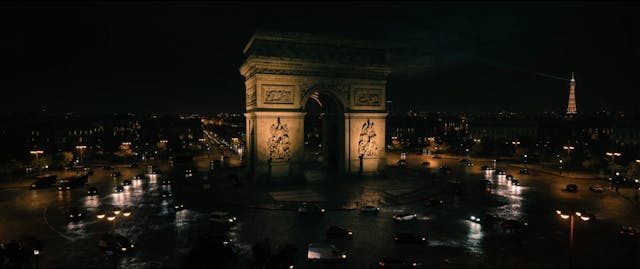
The Cuda is the star of a sequence set in the world’s most hellish place to drive: the roundabout surrounding the Arc de Triomphe. The bounty on John’s head keeps increasing, and one of the Parisian goons who wants it rams into John Wick with his Cuda; unfortunately for this hopeful henchman, John survives and lands on the car’s hood. As per usual, things do not end well for John’s opponent. John shoots him through the windshield and then commandeers the car, using it like a battering ram and ripping the doors off in the process.
The doorless Cuda only makes John deadlier, allowing him to drive circles around his adversaries, shooting them with ease. Eventually, though, the car flips, helpfully becoming John’s shield from gunfire (and oncoming traffic).
Keanu Reeves is in that driver’s seat for real, by the way. It took about five months to train him for this sequence: “We took the car-driving to the next level, which I really enjoy,” Keanu Reeves told Total Film. “There’s 180s, forward-into-reverse 180s, reverse-into-forward 270s, drifting … so it was really fun to get a chance to learn those skills, and to play.”


In Chapter 4, the roundabout around the Arc proves an even more harrowing labyrinth than usual, the sequence evolving into a Frogger-like game where everyone involved has to avoid getting shot and hit by vehicles. Planning this scene was a logistical nightmare. The roundabout was recreated to the inch at Tegel Airport in Berlin. To avoid miscommunications and overcome the language barrier, Stahelski’s stunt team planned for every worst-case scenario imaginable. Different-colored cones were used to divide lanes. So Keanu Reeves, Marko Zaror (Chidi), Shamier Anderson (the Tracker), the stunt drivers, and the camera crew knew where to be at all times. If they stayed in their lane, they wouldn’t get hit.
“It’s literally like playing Twister,” Stahelski said. “They know exactly where to step. Our cars know exactly what lane, they’re all color-coded. We’re taking any miscommunications out of the system. You just have to go, ‘look at blue, blue, stay in blue.’ And then we get that, and we rehearse and rehearse, and then you figure out, what if somebody still gets confused? Where’s the outs, so every other car is staggered, so everyone’s always got room to swerve? And then it’s rehearsed and rehearsed, and rehearsed, and rehearsed and rehearsed and rehearsed, with the camera team with it.”
And the production doesn’t simply have to worry about the stunt guys getting hit by just one car — if someone had been hit, forty more cars would be hurtling their way. To prevent this, “we put them on these wires, we have a big grid above so the guys are actually taking a car hit with the wire to make sure he doesn’t go too far, and then we put him down,” Stahelski said. “And if they do [get hit], we can stop him from being run over by another.”
Thanks to this thorough, careful planning and all the safety precautions they put in place, no one was injured beyond a few bumps and bruises. The cars weren’t so lucky, however: five cars heavily modified for stunts were used, but unfortunately, only one survived.

The Cuda is a bit of callback to John’s Mustang in Chapter 2’s opening sequence, though only one of the Mustang’s doors is ripped off, not two. It feels like the Mustang’s avenging ghost. It also evokes Christine, the possessed Plymouth Fury in John Carpenter’s adaptation of the Stephen King novel. With John Wick at the wheel, the car feels possessed, fearsome, a glossy-black demon with Cragar-style wheels, a twin scoop rally hood, and dual headlights. Considering Reeves had to stay on top of the car while it was in motion, the twin scoop rally hood was probably a little more comfortable and easier to hold on to than the shaker hood that denotes a 426 Hemi.

The Barracuda began its life as a riff on the Plymouth Valiant made with a small-block engine. Released just two weeks before the Ford Mustang in 1964, it was technically the first pony car. By 1969, though, Plymouth had beefed up their humble machine and launched the Cuda, their performance package: the fastest and most powerful that they had to offer, capable of speeds up to approximately 130 mph. And those outfitted with a 426 Hemi engine could close in on speeds of 144 mph. Like the Dodge Challenger, it was built on Chrysler’s E-body. (Sometimes they used a Chrysler B-body to fit the biggest V-8 engines.)
The car was beast-like by design, modeled after its namesake: the new grille was designed “to suggest barracuda fish teeth,” according to Chrysler designer Diran Yazejian, and the front fenders’ “simulated chrome inset louvers suggested gills.” That makes 1971 perhaps the most aggressive-looking model year of the Barracuda, and menace is an essential characteristic of any car driven by John Wick. The aesthetic of the car coupled with the power under its hood make this ideal for John to drive—and to weaponize.
These movies have never featured a straightforward car chase. But it feels right for the character: John Wick fights in close quarters, his kills are intimate, up close and personal. The car feels like an extension of John’s body. As Stahelski explained, this was born of an ethos espoused by self-defense expert Marc MacYoung: “…anything you pick up or anything you use as an extension of your will, the will to conquer another, the will to win, the will to kill, the will to survive dominates anything and you will use anything in your reach, power, grasp, opportunity to use that to survive. I always thought that was a cool thing. If you describe John Wick in one word, it would be ‘willpower.’ Anything he touches—from a pencil to a Mustang to a Barracuda to a staircase to a waterfall—this guy’s using it to survive.”

From a budget perspective, a car chase is never an easy sell. It didn’t make sense even for the first John Wick, which only had a $20 million budget. “For your audience out there, cars become very expensive because you’re not moving quickly, and every car is anywhere from ten to hundreds of thousands of dollars per what you’re using,” says Stahelski. “Once you get up to 40 to 50 miles an hour you’re covering city blocks, you have to lock it off, you have to light it late at night. Car chases are logistically more complicated and more expensive than most other action sequences. Even without visual effects, they’re expensive. If you really look at most car chases, it’s a lot of what we call ‘shoe leather.’ It’s going straight fast, wiping by, tracking, or turning corners. You’re trying to tie the chase together. Even to do the simplest car chases, they take time and money. They’re really not worth the bang for their buck unless you have the money to do something cool.”
And doing something cool is Stahelski’s priority, his filmmaking raison d’être. Credit a philosophy that blends Marcus Aurelius (“The impediment to action advances action. What stands in the way becomes the way”) as well as Jackie Chan’s approach to action (“make it hard!”), Chad Stahelski and his stunt team create action sequences that push the envelope: like the aerial view of a gunfight involving dragon’s breath rounds, a chase through New York on horseback, or swordfighting on Yamaha MT-09 motorbikes.



This is how Stahelski and co-director of the first John Wick David Leitch came up with what they dubbed “car-fu,” opting for car fights instead of car chases. “When we did the first [John Wick], we knew we didn’t have much money, but we wanted to do something cool. So we’re like, F*** it, we’re just gonna do gun-fu, we’re gonna do car-fu. We’ll make it bumper cars, demolition derby. John Wick is gonna use the car as a weapon. And we’ll limit ourselves to just this one stretch, and we’re just going to bash everything with it. [ . . . ] We’ll just contain it, and make it very violent.”
Inventive, brutal fights that showcase classic cars ensued. The Arc de Triomphe showdown might just be Stahelski and his team’s best work yet, boasting some truly transcendent vehicular action. It’s an unforgettable spectacle that establishes its star Cuda as a new icon in the pantheon of cinematic cars.

***
Check out the Hagerty Media homepage so you don’t miss a single story, or better yet, bookmark it. To get our best stories delivered right to your inbox, subscribe to our newsletters.


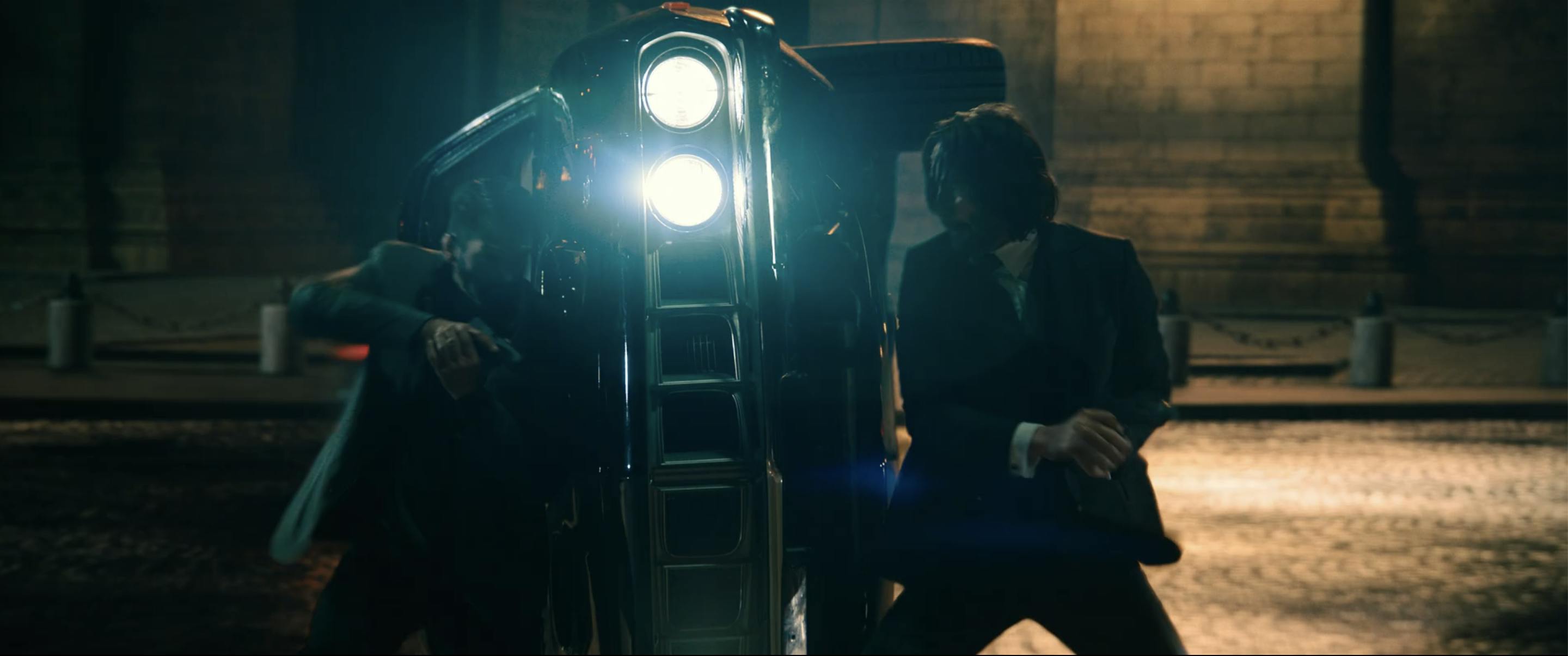
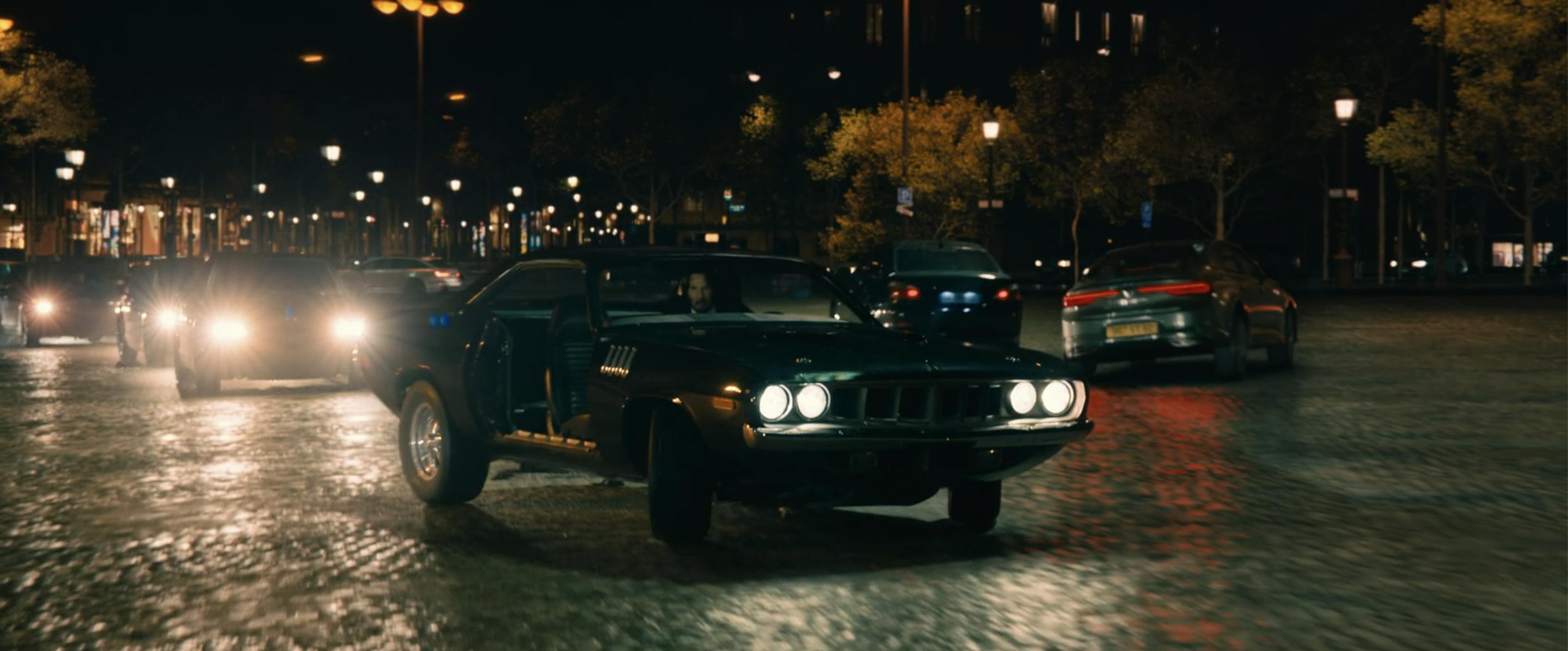
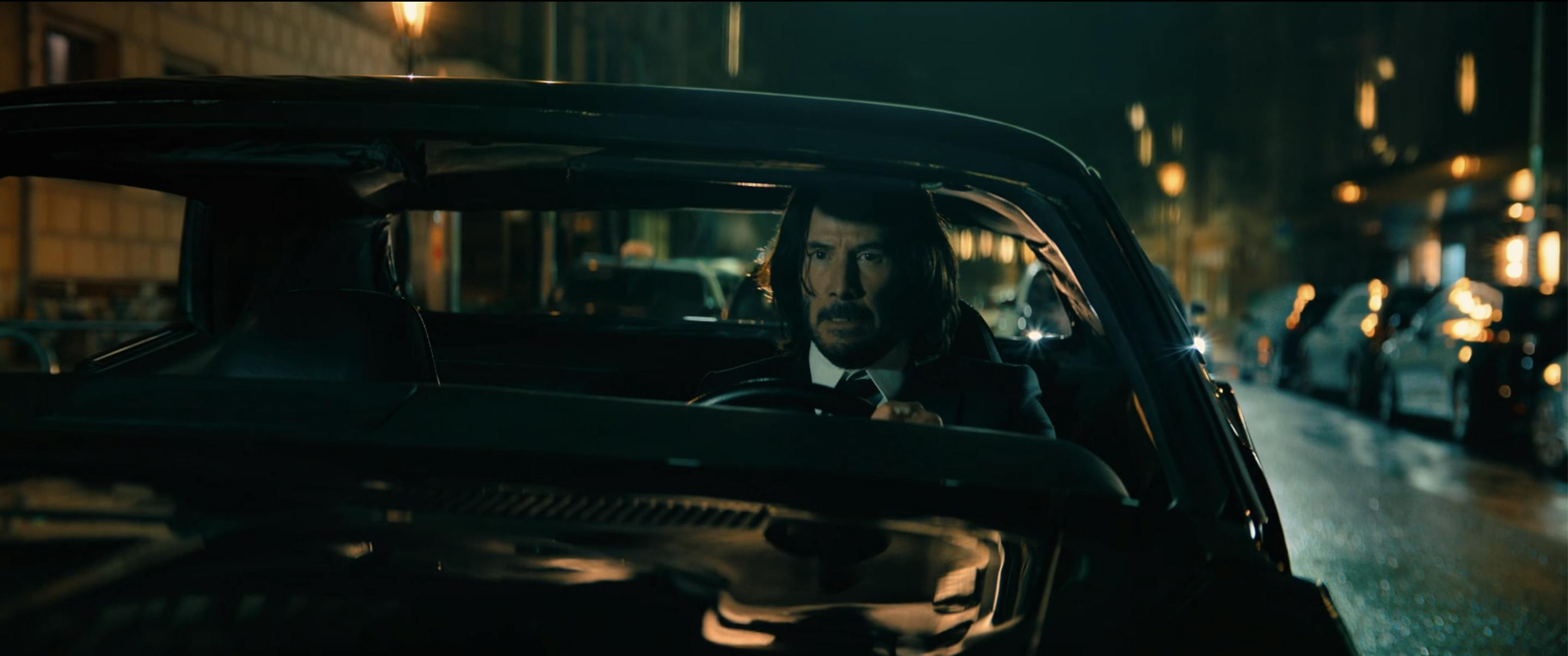
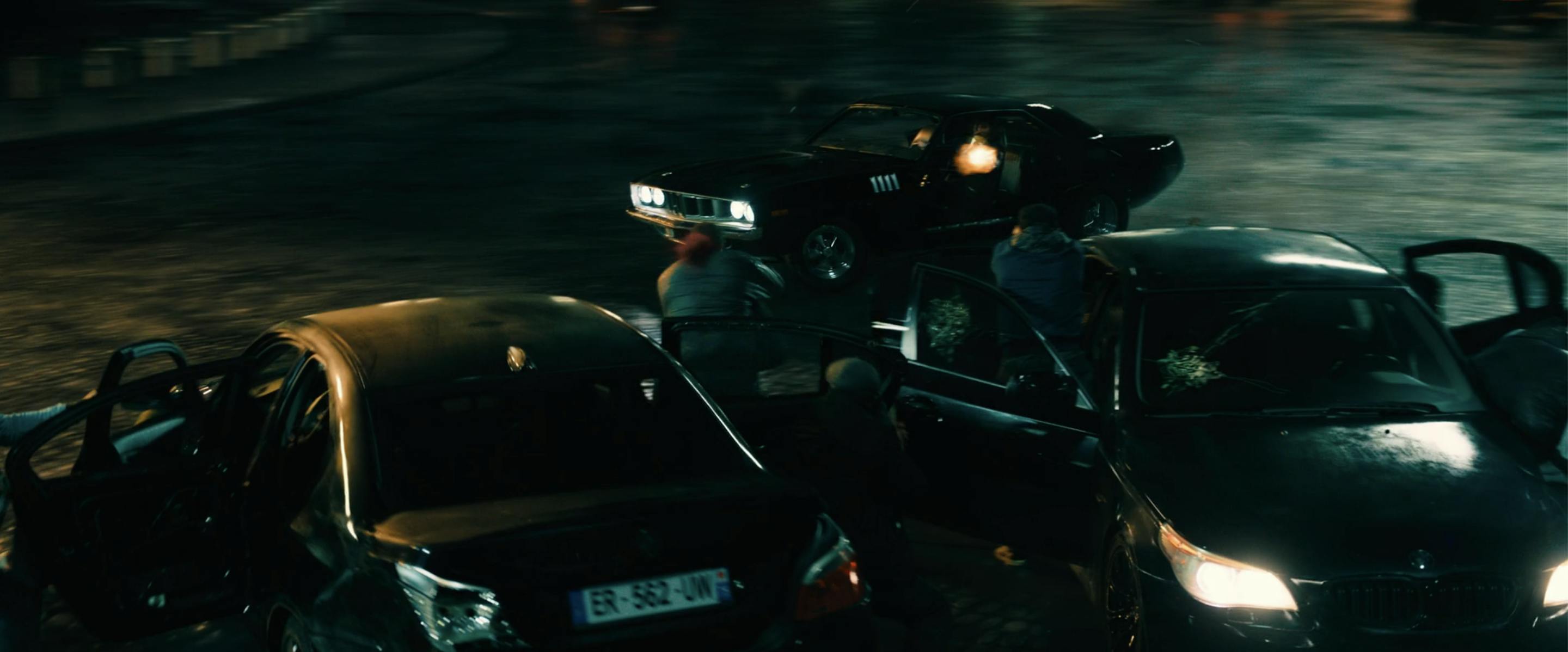
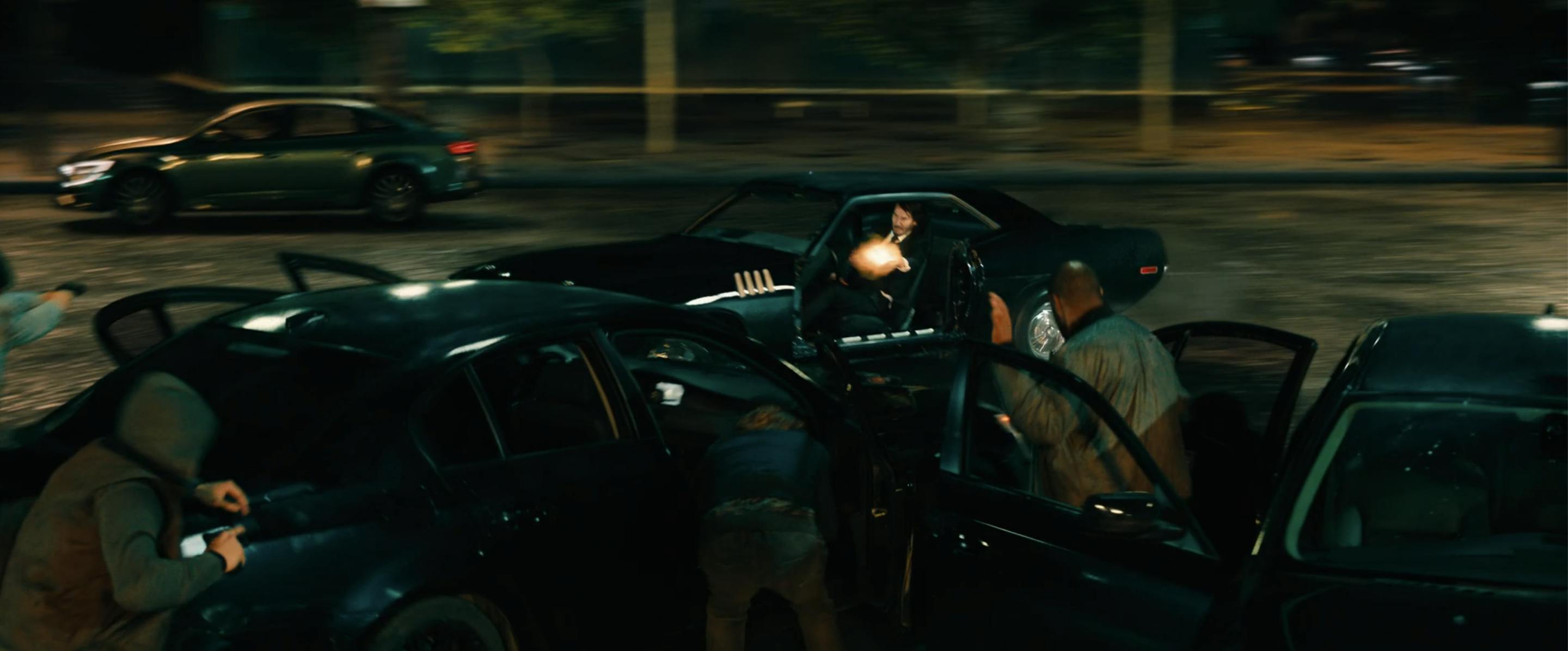

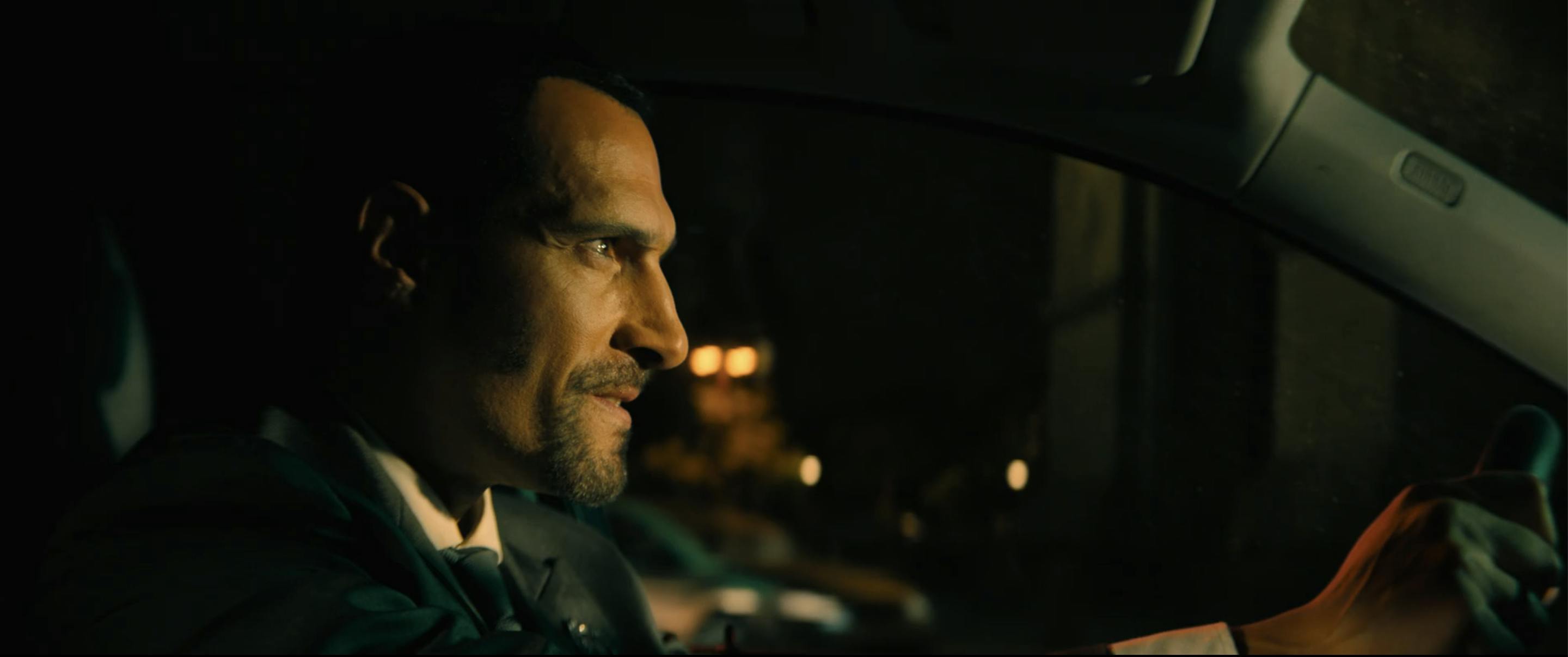
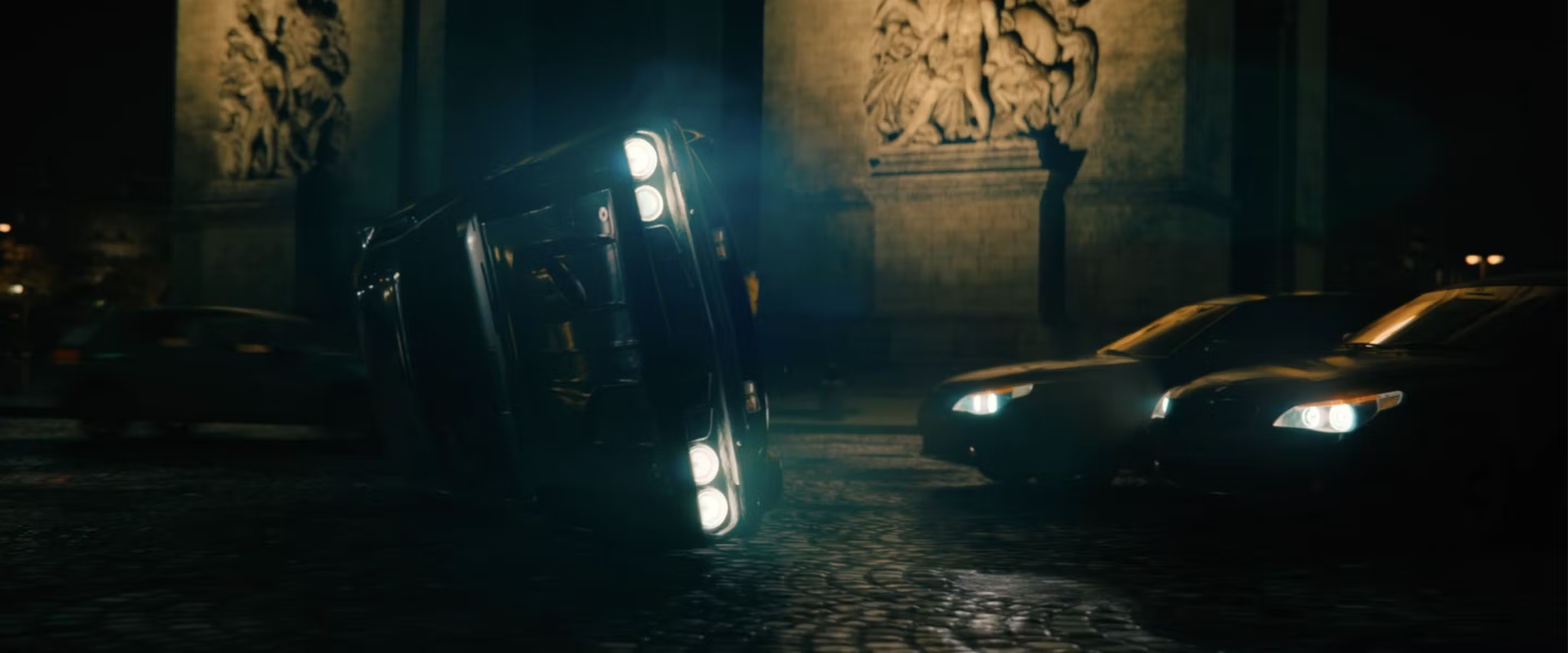
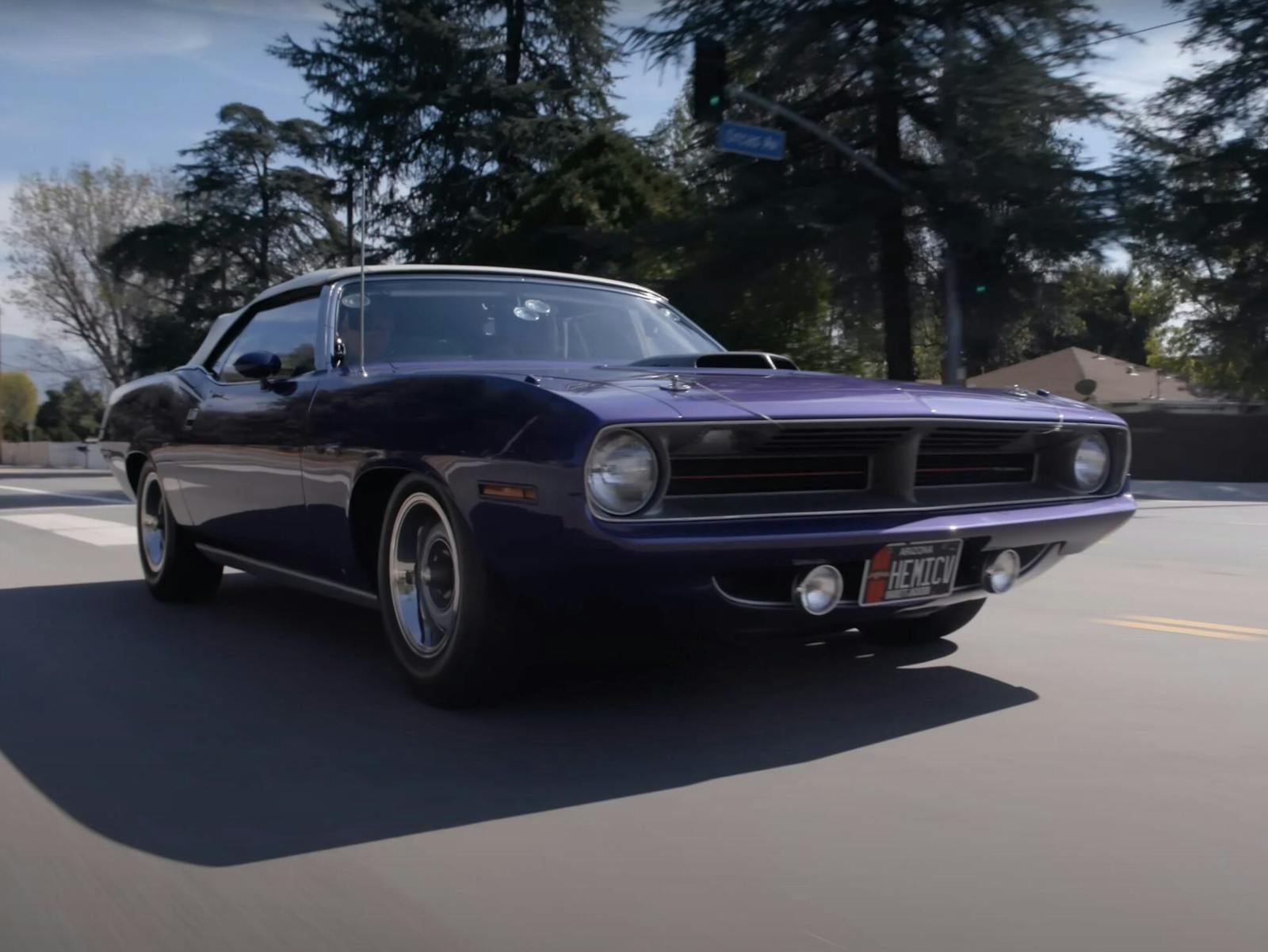

Where are all the Mopar fans out there who should be commenting pro or con about this car? I know very little about Cudas, so I’m not qualified to speak as to its credibility, but it wasn’t too hard for people to pick apart that “Boss 429” Mustang, so I’m supposing there are some experts out there who can tell us if this time they nailed it. What say you, Plymouth Ponycar folks?
They ruined a 71 Cuda to make a movie? That is unforgivable. Use up the Mustangs, they made enough Mustangs for everybody who might ever want one. Cudas and Challengers are rare. Super rare.
Especially a quad headlight 71″ Cuda. No other E-bodied cars had 4 headlights except 71′. My all time favorite unicorn!
I agree with 77GL. I saw a modular movie car that could be cgi’d to appear as any car. Why don’t they do that?
I’ve seen all four Wick movies. This was a 72 Barracuda with a 71 grille and 71 gills on the side. Check the side marker lights – it is a 1972 model. Cool car either way.
Now there’s what I was looking for: someone with both knowledge and an eye for detail. Sometimes something as simple as the size and shape of a marker light lens can be a dead giveaway. Nicely done, John B! 😄
It’s dark and beat to crap but I’d say I’m certain Rogan sent Stahelski a pic of the Phantasm Cuda. Too similar to be a coincidence!
The cars and the chases are part of the fun of these movies. I love seeing them being driven hard.
The shaker hood does not denote a hemi
B bodies and E bodies are different cars and not interchangeable
Google and 2 minutes of your life would have prevented you from looking like a hack
None of these “ACTION” movies have a budget to take any number of multi-million$ Classic musclecars and take them through a shredder. So much less expensive to have your autoshop provider to softly modify $2K cars to appear like the “Magic” Supercars that we salivate for. Put Cragars and a modified exhaust on and 318 no-Pars are heroes. Only “Dukes of Hazzard” really broke hearts.
I love clever, unique car stunts more than most but for the love of Gawd how about lighting them so I don’t need night vision to appreciate them fully?!?